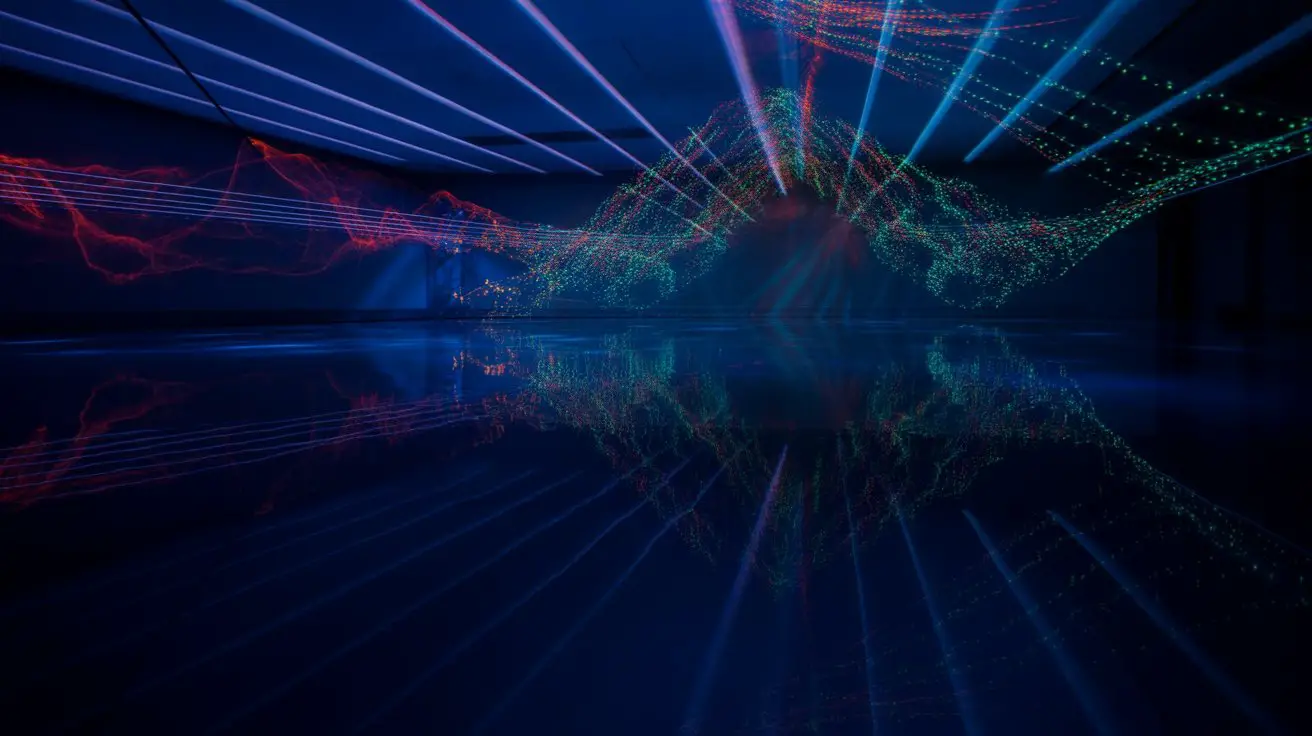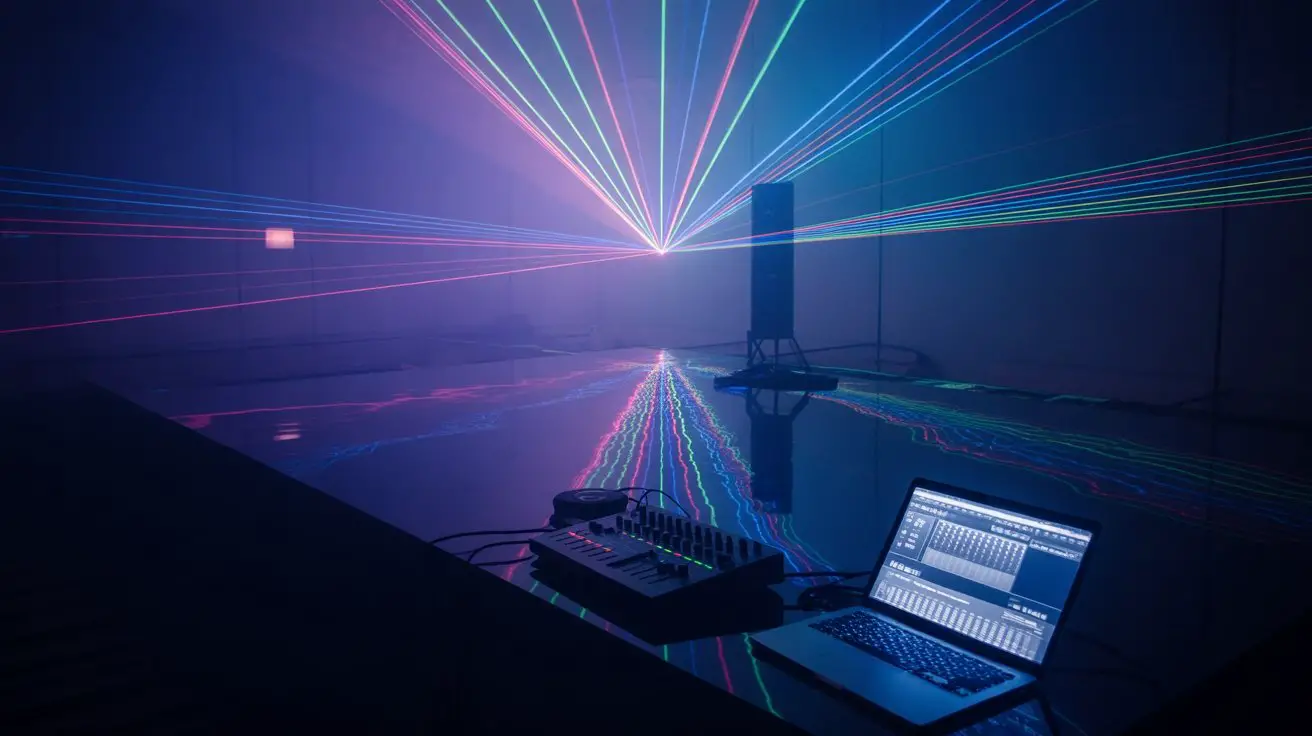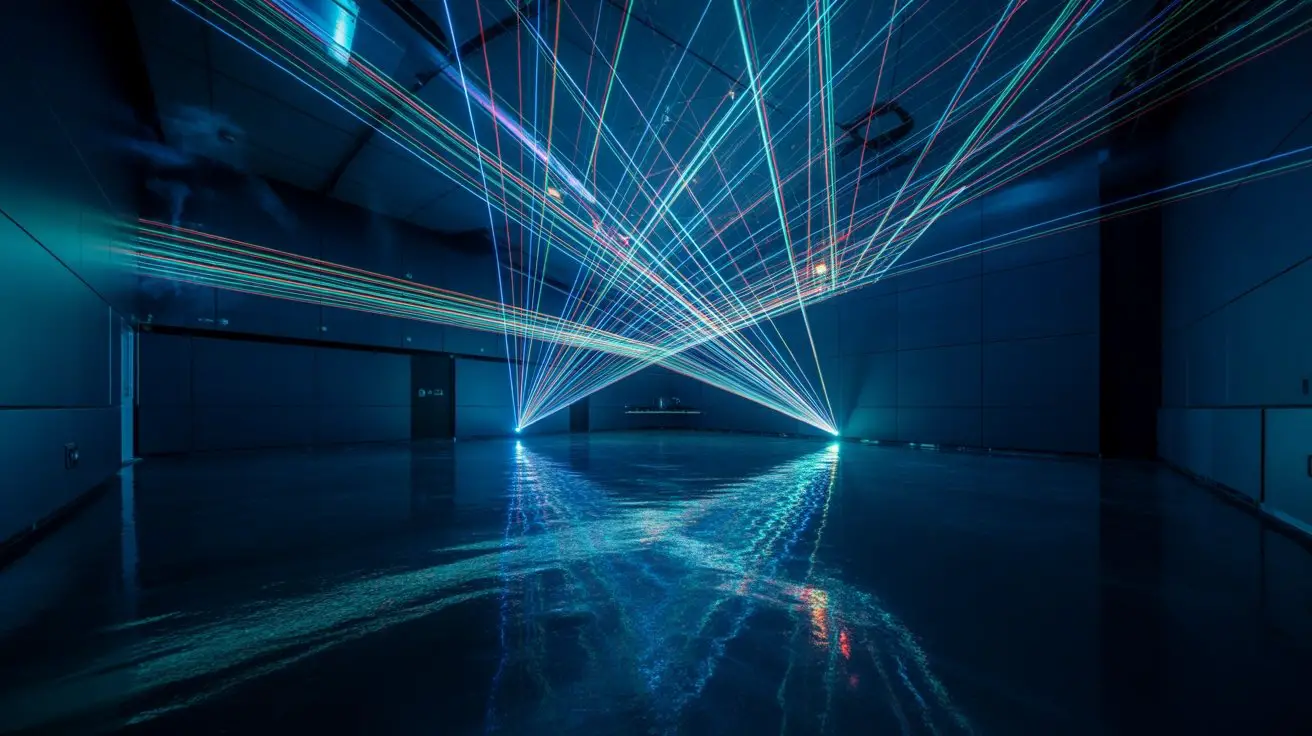You’ll encounter laser light patterns that defy conventional illumination principles through their coherent, monochromatic beam characteristics and precise wavelength control. Unlike incandescent or fluorescent sources, lasers maintain spatial coherence across their entire wavefront, enabling you to manipulate photon trajectories with mathematical precision using diffractive optical elements and beam-shaping optics. Your understanding of these fundamental differences becomes critical when you need to generate specific geometric patterns—from micron-scale focal points to complex holographic projections that determine success in industrial applications.
How Laser Light Differs From Regular Light Sources
While conventional light sources emit photons with random phases, wavelengths, and directions, laser light exhibits three fundamental properties that distinguish it from ordinary illumination: coherence, monochromaticity, and collimation.
You’ll observe coherence as the consistent phase relationship between photons, enabling interference patterns and maintaining wavefront integrity across distances.
Monochromaticity means you’re working with a narrow spectral bandwidth—often less than 0.1 nanometers—compared to incandescent bulbs spanning hundreds of nanometers.
Collimation produces minimal beam divergence, typically measured in milliradians, allowing precise directional control.
These characteristics let you generate sharp geometric patterns, maintain intensity over extended distances, and create predictable interference effects.
When you direct laser light through apertures, diffraction gratings, or optical elements, you’ll achieve reproducible dot matrices, line arrays, and complex geometric shapes impossible with conventional sources.
The Physics Behind Dot Formation and Beam Focus
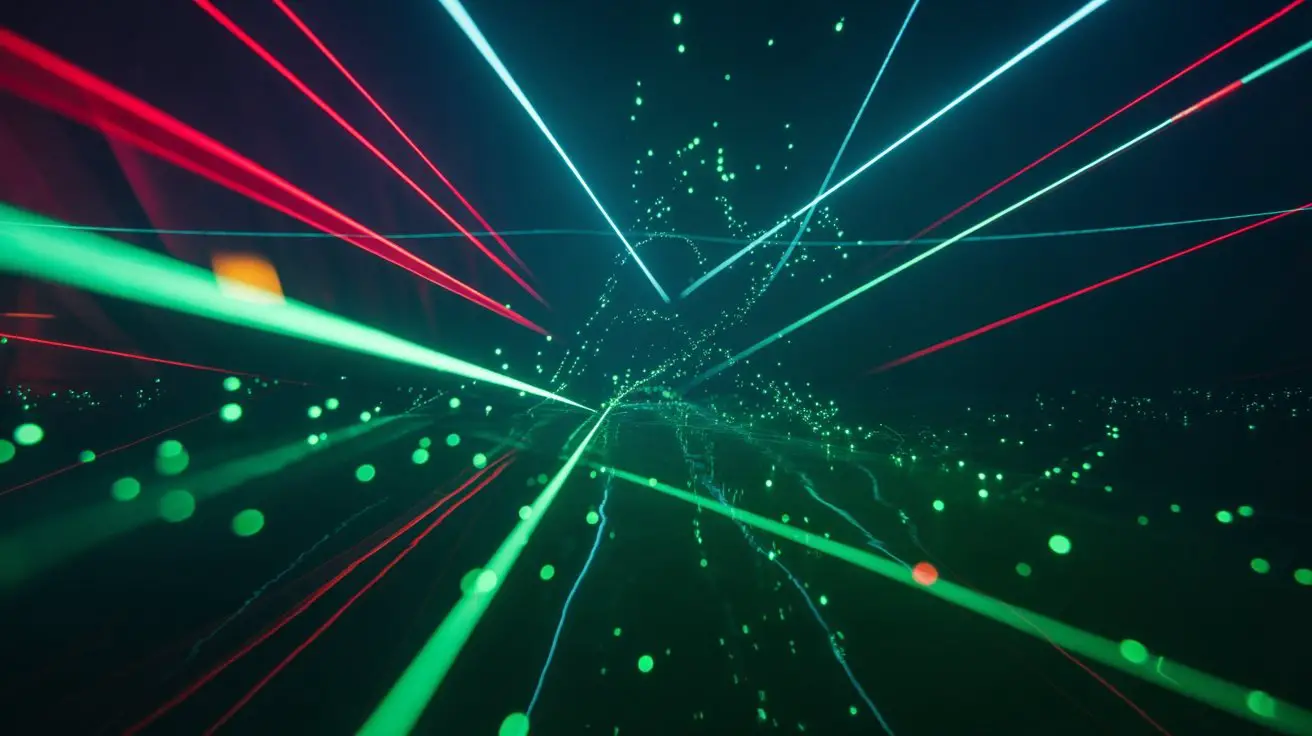
When you focus a laser beam, you’re manipulating the wavefront curvature through optical elements that concentrate electromagnetic energy into increasingly smaller cross-sectional areas.
Convergent lenses create spherical wavefronts that achieve minimum spot size at the focal point, where beam waist radius w₀ determines diffraction-limited performance. The focal length f and input beam diameter D establish the focusing parameter M² through the relationship w₀ = λf/πD for Gaussian beams.
You’ll encounter Rayleigh length zᵣ = πw₀²/λ, defining the axial distance where beam area doubles.
Numerical aperture NA = D/2f governs your focusing capability, with higher values producing smaller dots. Aberrations from spherical surfaces, chromatic dispersion, and thermal lensing degrade ideal focusing.
Aspheric elements minimize spherical aberration, while achromatic doublets reduce chromatic effects for precise dot formation.
Creating Linear Patterns Through Optical Manipulation
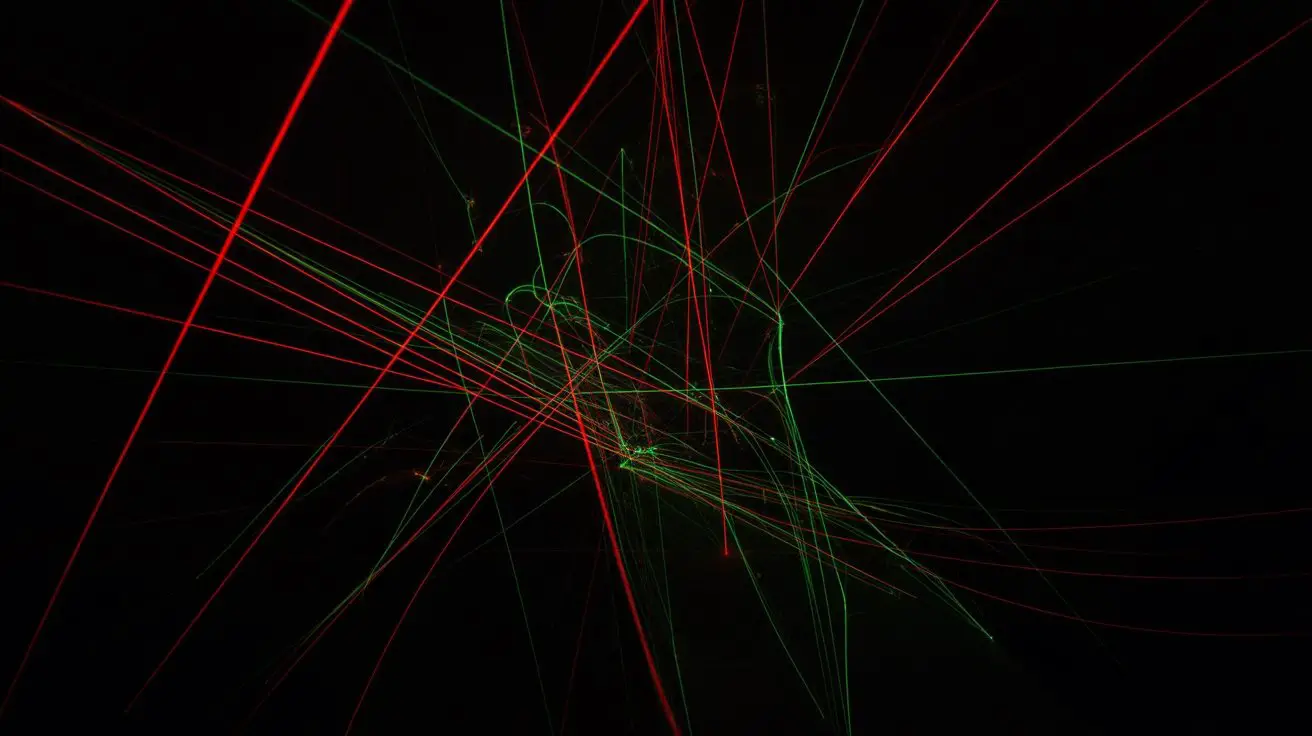
Since laser dots represent just one geometric configuration, you’ll need cylindrical lenses, Powell lenses, or diffractive optical elements (DOEs) to generate linear patterns with controlled intensity distributions.
Cylindrical lenses focus light along one axis while leaving the perpendicular axis unaffected, creating uniform line illumination with Gaussian intensity profiles. Powell lenses redistribute energy through specialized aspheric surfaces, producing flat-top intensity distributions across the line’s width. DOEs utilize micro-structured surface patterns to diffract incoming beams into precise linear geometries with programmable intensity modulation.
You can achieve variable line lengths by adjusting working distances and optical magnification ratios. Fan angles determine line thickness and uniformity parameters.
Beam shaping efficiency depends on wavelength matching, surface quality specifications, and thermal management considerations during high-power applications.
Complex Shape Generation Using Diffraction and Interference
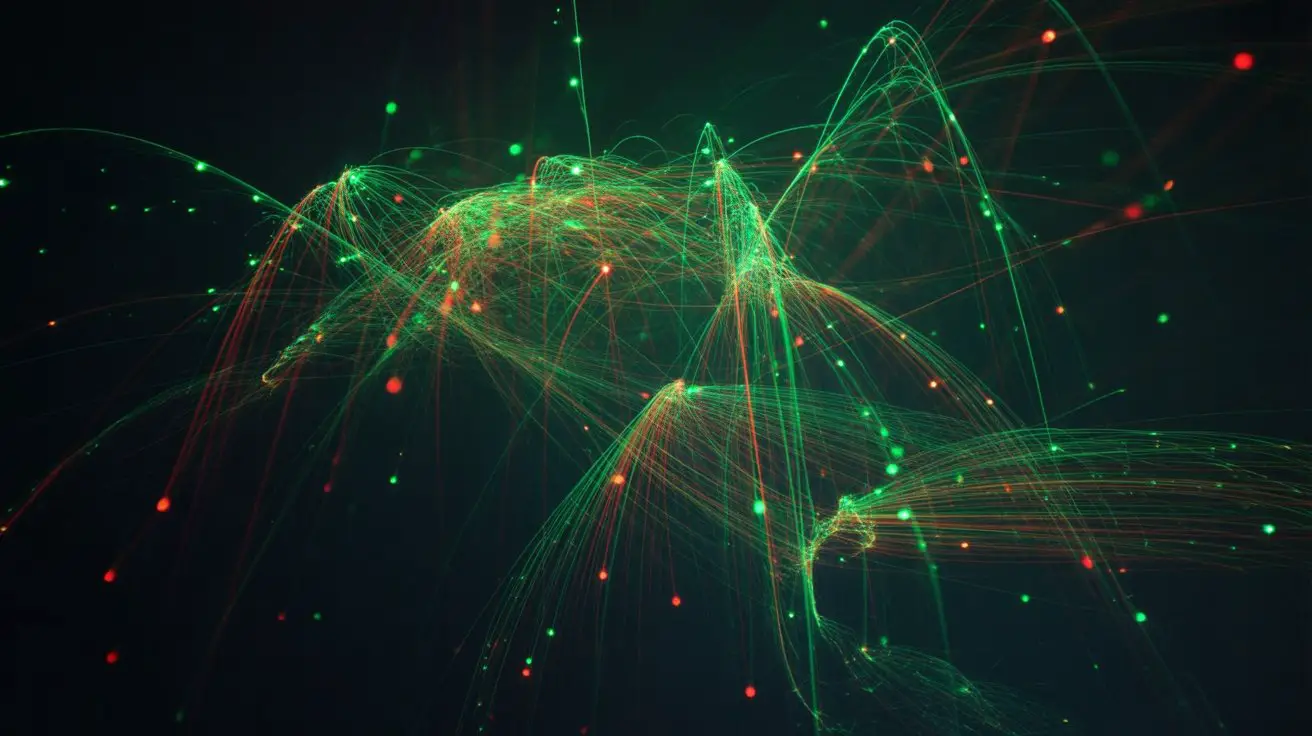
Beyond simple linear configurations, you can generate intricate geometric patterns by exploiting the wave nature of laser light through controlled diffraction and interference phenomena.
You’ll achieve complex shapes using diffractive optical elements (DOEs) that modulate wavefront phase distributions. Computer-generated holograms enable precise amplitude and phase control, producing arbitrary two-dimensional patterns through Fourier transform relationships.
You can create interference patterns by splitting coherent beams and recombining them at specific angles. Multiple beam interference generates periodic structures like hexagonal arrays or Moiré patterns.
Fresnel zone plates focus light into concentric rings, while binary phase gratings produce higher-order diffraction modes.
For dynamic pattern generation, you’ll employ spatial light modulators (SLMs) with liquid crystal arrays. These devices provide real-time wavefront control, enabling rapid pattern switching and adaptive beam shaping for industrial applications requiring precise geometric configurations.
Real-World Applications Across Industries and Technologies
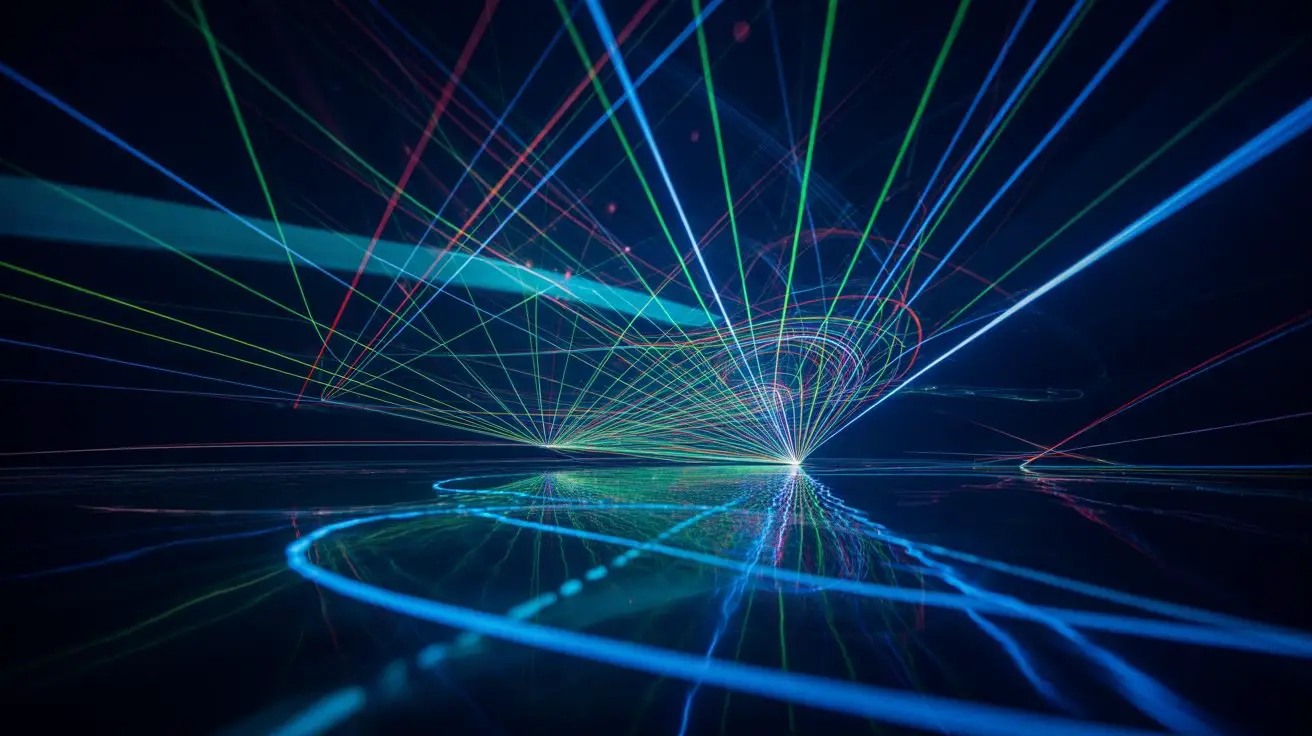
Although laser light pattern generation emerged from fundamental optics research, you’ll find these technologies driving critical processes across manufacturing, biomedical, telecommunications, and defense sectors.
| Industry | Application | Pattern Type |
|---|---|---|
| Manufacturing | Precision cutting/welding | Gaussian beams, line patterns |
| Biomedical | Optical coherence tomography | Interferometric fringes |
| Telecommunications | Fiber optic coupling | Single-mode spot patterns |
| Defense | Target designation/ranging | Structured illumination |
| Semiconductor | Lithography exposure | Complex holographic patterns |
You’ll encounter beam shaping optics transforming fundamental Gaussian profiles into top-hat distributions for uniform material processing. Diffractive optical elements generate multi-spot arrays for parallel processing applications. Spatial light modulators enable dynamic pattern reconfiguration in real-time systems. These implementations leverage precise wavefront control to achieve nanometer-scale positioning accuracy and microsecond temporal response characteristics essential for modern industrial automation.
Frequently Asked Questions
What Safety Precautions Should I Take When Working With Laser Light Patterns?
You must wear appropriate laser safety eyewear rated for specific wavelengths, establish controlled access zones, post warning signage, implement beam stops, avoid reflective surfaces, and follow ANSI Z136.1 standards for maximum permissible exposure limits.
How Much Do Laser Pattern Projection Systems Typically Cost?
Simple handheld units cost $50-200, while industrial-grade galvanometer systems reach $10,000-50,000. You’ll find entry-level projectors around $500-2,000, whereas precision beam-steering assemblies with high-resolution optics demand considerably higher capital investment for professional applications.
Can I Create Custom Laser Patterns at Home With DIY Equipment?
You can fabricate custom laser patterns using galvanometer scanners, ILDA-compatible DACs, and beam-shaping optics. You’ll need precise voltage control circuits, real-time positioning feedback systems, and appropriate laser safety equipment for effective pattern generation and beam manipulation.
What Maintenance Is Required to Keep Laser Pattern Devices Functioning Properly?
You’ll need to clean optical surfaces with lint-free cloths, calibrate galvanometer positioning systems, replace laser diodes when beam intensity degrades, verify thermal management functionality, and regularly inspect mechanical assemblies for wear patterns affecting projection accuracy.
Are There Legal Restrictions on Using Laser Projectors in Public Spaces?
You’ll encounter strict FDA classifications requiring Class IIIa compliance for public displays. Municipal ordinances typically mandate permits, insurance coverage, and operator certification. Aviation authorities prohibit sky-pointing lasers exceeding 5mW within controlled airspace zones.
Conclusion
You’ve witnessed laser technology’s metamorphosis from simple coherent beams into sophisticated pattern generators through precise wavefront manipulation and diffractive optics. Your understanding now encompasses beam collimation parameters, interference phenomena, and holographic reconstruction techniques that enable nanometer-scale dot formation, linear beam shaping via Powell lenses, and complex geometric patterns through spatial light modulation. These methodologies transform coherent photons into industrial tools spanning semiconductor lithography, optical communications, and precision manufacturing applications across multiple technological domains.

